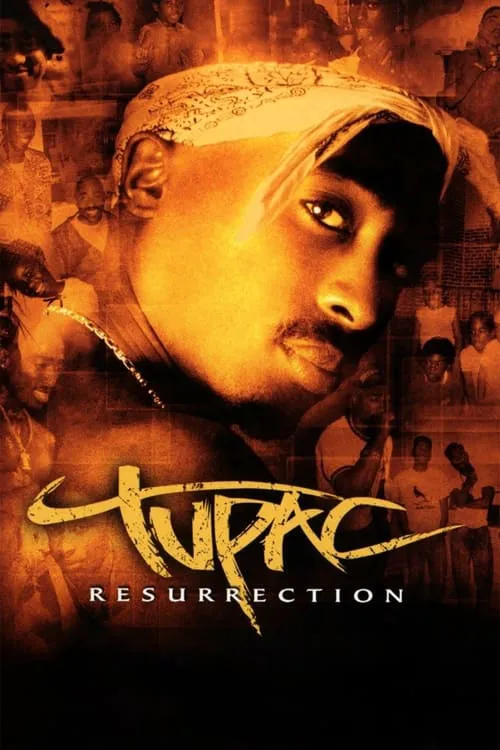Tupac: Resurrection

Plot
Tupac: Resurrection is a 2003 documentary film that delves into the life of Tupac Shakur, a legendary rapper, actor, and social activist. Born on June 16, 1971, in East Harlem, New York, Tupac grew up in a family deeply invested in the arts and politics. His mother, Afeni Shakur, was a Black Panther Party member and a key figure in the Civil Rights Movement. This upbringing would shape Tupac's worldview and influence his music. The documentary, directed by Laurent Réjous and Barbara Schroeder, employs a unique approach, incorporating home movies, photographs, and recited poetry to bring Tupac's story to life. Through this non-traditional narrative, we see Tupac as both a product of his environment and an artist driven by a singular vision. We witness his early days in Baltimore, where he attended the Baltimore School for the Arts, and developed a passion for acting and writing. It was there that he met Jada Pinkett Smith, who would become one of his closest friends. Tupac's talent and charisma soon earned him a spot at the prestigious Baltimore City College, but his rebellious nature and involvement with the arts would lead to his expulsion. Tupac's journey takes us to Los Angeles, where he became a prominent figure in the hip-hop scene. He formed the group Digital Underground and began to gain recognition as a rapper in his own right. However, it was his solo work that truly catapulted him to stardom. His debut album, "2Pacalypse Now," released in 1991, addressed issues of poverty, racism, and police brutality, marking the beginning of his activist legacy. As Tupac's popularity soared, so did the stakes. His music tackled contentious issues, earning him both praise and criticism. His lyrics often reflected the harsh realities of life in urban America, making him a voice for the voiceless. His iconic songs, such as "Changes" and "So Many Tears," remain anthems for the marginalized. Tupac's involvement in the West Coast hip-hop scene further fueled his notoriety. His feuds with fellow rappers, such as The Notorious B.I.G. and Suge Knight, would ultimately lead to his untimely demise. On September 7, 1996, Tupac was gunned down in Las Vegas after attending a boxing match between Mike Tyson and Bruce Seldon. Throughout the documentary, Tupac's poetry serves as a poignant reminder of his humanity. His words paint a vivid picture of his experiences, from his early days as a young black man to his rise to fame. His poetry often takes on a prophetic tone, addressing issues that remain pressing today. "I know I've been through hell," he recites, "and I've come out stronger." His resilience in the face of adversity is a testament to his unwavering spirit. Tupac: Resurrection offers a nuanced exploration of Tupac's life, one that goes beyond the hype surrounding his persona. We see a complex individual, driven by a desire for justice and a passion for art. The documentary humanizes Tupac, stripping away the myths and misconceptions that have long surrounded him. His story serves as a powerful reminder of the impact that one person can have on the world. As we follow Tupac's journey, we also gain insight into the tumultuous world of 1990s hip-hop. The film explores the cultural and social forces that shaped the music and its artists during that time. We see the tensions between East Coast and West Coast rappers, the rise of the gangsta rap genre, and the increasing commercialization of hip-hop. Tupac: Resurrection concludes with a message that remains as relevant today as it was when the film was first released. Tupac's music and legacy continue to inspire a new generation, serving as a beacon of hope for those seeking change. As the documentary closes, Tupac's words echo: "Don't let the system get you down, you know what it is." His spirit lives on, a testament to the enduring power of art and activism.
Reviews
Recommendations




